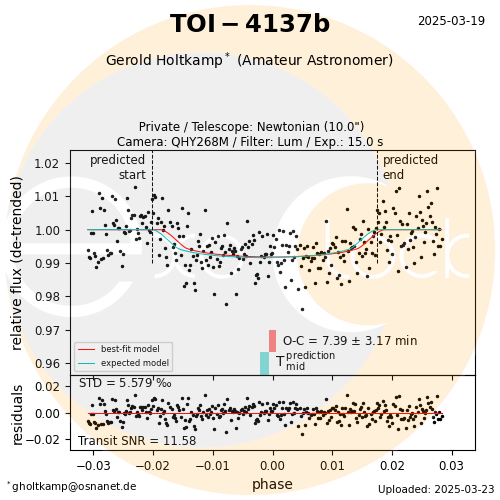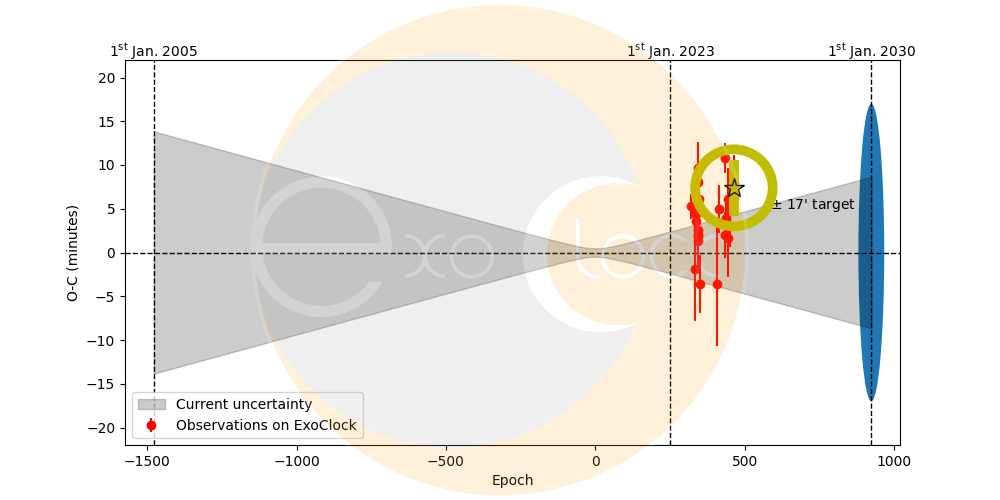Contribution by Dr. Gerold Holtkamp, June 2025
The measurements were taken from 7:19 PM UTC on March 19, 2025, to 12:39 AM UTC on March 20, 2025, in Osnabrück, Sonnenhügel. The moon was 74% illuminated and 133° distant. It rose at approximately 12:15 AM UTC on March 20, 2025, and was therefore hardly relevant for the measurement.
The measurement technique used:
Telescope: Skywatcher Newton 250/1200 mm
Mount: Skywatcher AZ-EQ6
Filter: Luminanz (Antlia)
Camera: QHY268M with gain 60, offset 20, chip temperature -10° C
Guiding: Skywatcher Guidescope Evoguide 50 ED with camera ZWO ASI120mm
NINA was used for camera and mount control.

The present measurement and the subsequent evaluation with the hops software of the Exoclock-Project resulted in:
Rp/Rs = 0.0855 +/- 0.0037 (expected 0.0865 +/- 0.0008) *
–> Rp = 0,0855 x 1.001.337 = 85.614 +/- 3.705 km. [1]
The exoplanet TOI-4137b is thus significantly larger than Jupiter (radius = 69,911 km). Nevertheless, the transit light curve shows only a dip of 8.5 mmag, which is due to the enormous size of the parent star. The system is 1,093 light-years from Earth.

The value of the transit's temporal center, expressed as the difference between the observed and expected values, which is important for the Exoclock project, is significantly higher than the expected value at O-C = 7.89 +/- 3.17 minutes**. Furthermore, the error is quite large. However, the other observations on Exoclock also exhibit large deviations and error bars.
The measurement of the transit light curve of the exoplanet TOI-4137b was published on the Exoclock project website. [2]
_______________________________________________________________________________
* [Rp = Rplanet, Rs = Rstar]
If the star's radius is known, the planet's radius is determined directly from the dip in the light curve. (see also https://kosmos-os.de/messung-der-transitlichtkurven-der-exoplaneten-wasp-84b-und-kps-1b-am-7-und-8-maerz-2024)
** [O = Observed, C = Calculated]
[1]
Data on the star system and the exoplanet at
https://exoplanetarchive.ipac.caltech.edu/overview/toi-4137
The radius of the parent star was taken as 1.438 +0.039/-0.038 (Yee et al. 2022) x the radius of the Sun. The radius of the Sun was assumed to be 696,340 km. The parent star thus has a radius of 1,001,337 km.
[2]
https://www.exoclock.space/database/observations/TOI-4137b_2422_2025-03-19_Gerold_1561_Lum/